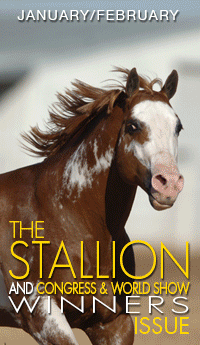Texans Encouraged to Stay Vigilant for New World Screwworms in Livestock
Courtesy of the Texas Animal Health Commission, September 23, 2025, via AQHA.
Texans Encouraged to Stay Vigilant for New World Screwworms in Livestock – AQHA
On September 21, 2025, Mexico’s National Service of Agro-Alimentary Health, Safety, and Quality (SENASICA) confirmed a positive detection of New World screwworm (NWS) in Sabinas Hidalgo, located in Nuevo Leon, Mexico. According to the USDA Animal and Plant Health Inspection Service (APHIS), this case is located less than 70 miles from the U.S.-Mexico border.
The NWS detection was found in an eight-month-old heifer recently moved to a certified feedlot from a region in Southern Mexico with known active NWS cases. APHIS continues to restrict movement of cattle, bison, and horse imports from Mexico. The TAHC is working closely with USDA to implement existing response plans to enforce pest monitoring at Texas’ southern border and into the state. In addition to extensive federal activities illustrated in Secretary Rollins’ five-pronged plan, the TAHC continues to collaborate with response partners and producers to educate, train, prepare, and strategically respond to a possible incursion.
To support a swift response if NWS reaches Texas, producers located on the southern border and travelers from NWS-affected areas should closely monitor animals for signs and promptly report suspected cases of NWS.
General disease information and how to prevent the spread of NWS can be found on the TAHC and USDA websites and below.
WHAT IS NEW WORLD SCREWWORM?
New World screwworms (NWS) are larvae or maggots of the NWS fly (Cochliomyia hominivorax), that cause the painful condition NWS myiasis. NWS flies lay eggs in open wounds or orifices of live tissue. These eggs hatch into dangerous parasitic larvae, and the maggots burrow or screw into flesh with sharp mouth hooks. The wound can become larger, and an infestation can often cause serious, deadly damage. NWS primarily infest livestock and wildlife, but can also affect other mammals, including humans, and birds.
The parasite was last eradicated from the United States in 1966, with costly efforts by federal and state animal health officials, livestock producers, and veterinary practitioners. Eradication efforts have continued in Central America, but the pest is considered endemic in Cuba, Haiti, the Dominican Republic, and South America.
CLINICAL SIGNS
Producers should monitor animals closely and often for clinical signs associated with NWS and report suspicions to a veterinarian or the TAHC immediately. Clinical signs of NWS myiasis may include:
- Irritated or depressed behavior
- Loss of appetite
- Head shaking
- Smell of decaying flesh
- Evidence of fly strike
- Presence of fly larvae (maggots) in wounds
- Isolation from other animals or people
REPORTING NEW WORLD SCREWWORM
Quick detection and reporting are essential to stopping the spread of NWS, if they get to Texas. If you suspect NWS in your livestock or domestic animals, contact the TAHC immediately and do not move your animals. A representative will advise you on current collection protocols for submitting suspicious maggots.
Producers, veterinarians, diagnostic laboratories, or anyone with suspicious livestock or domestic animals must make reports to a TAHC region office or the 24-hour vet on-call line, 1-800-550-8242, within 24 hours of suspect or confirmed cases. If you suspect wildlife with NWS infestations contact your local Texas Parks and Wildlife Department (TPWD) wildlife biologist.
TRANSMISSION
NWS infestations begin when a female NWS fly is attracted to the odor of a wound or opening of a live warm-blooded animal to lay eggs. These openings can include wounds as small as a tick bite, nasal or eye openings, umbilicus of a newborn, or genitalia. One NWS female fly can lay 200-300 eggs at a time and may lay up to 3,000 eggs during her lifespan.
Eggs hatch into larvae (maggots) that burrow into a wound or other opening to feed. After feeding, larvae drop to the ground, burrow into the soil, and emerge as adult NWS flies. Adult NWS flies can fly long distances, and the movement of infested livestock or wildlife can lead to spread of even longer distances.
DIAGNOSIS
There are several flies associated with wounds, but only NWS feed on living tissues, versus dead tissues and fluids. The identification of NWS is done by larvae collection and evaluation. NWS larvae have a series of backwardly protruding spines around a tapered body, giving a screw-like appearance, helping to identify the pest. Anyone who suspects suspicious wounds, maggots, or infestations should notify a veterinarian immediately.
PREVENTION
To avoid introduction of NWS monitor pets and livestock closely for open wounds, and clean, treat, and cover any wounds immediately. When traveling, especially in NWS-infested areas, ensure pets and vehicles are inspected for NWS flies and larvae before returning to the U.S.
TREATMENT AND ERADICATION
Animals exhibiting signs of myiasis, or NWS infestation, and any potential secondary infection should be immediately treated with an appropriate method by a veterinarian. Left untreated, animals may die within one week from complications associated with infestation.
Eradication of NWS infestations can be accomplished through the sterile insect technique. Sterilized male flies are released to mate in an area with an established NWS population. Females, only mating once in their lifetime, then lay nonviable eggs. The population decreases without the addition of new larvae and dies off naturally over a few lifecycles.
ADDITIONAL NEW WORLD SCREWWORM INFORMATION & RESOURCES
- Livestock resources: Texas Animal Commission
- Wildlife resources: Texas Parks and Wildlife Department and Texas A&M AgriLife Extension Service
- International updates and animal health resources: United States Department of Agriculture Animal and Plant Health Inspection Service, New World Screwworms
- Human Health Resources: U.S. Centers for Disease Control and Prevention, New World Screwworm Myiasis











